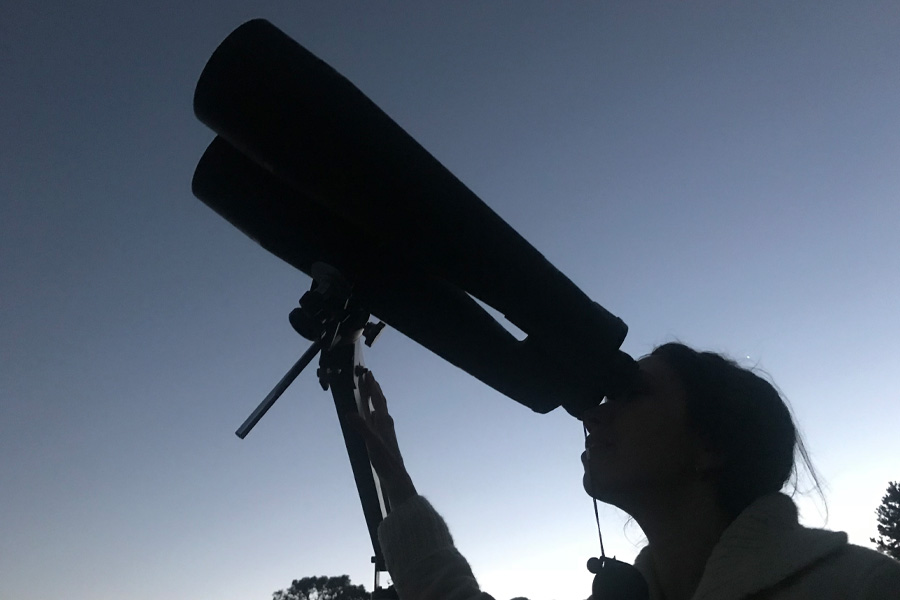Want to create experiences that aren’t just wonderful, but wonder-filled?
Moments of wonder expand what we think is possible in our lives. They connect us more deeply to ourselves, each other and the world around us.
Barbara Groth, Founder and Creative Director of the Nomadic School of Wonder, designs experiences that bring people into a felt experience of wonder and awe along with her travelling troupe of wondermakers.
“The Nomadic School of Wonder is a joyous, spontaneous adventure into the unknown to experience what it means to be fully alive, open and rich with the childlike wonder inside all of us.”
Barbara Groth
Groth started the School in the wake of grief, having spent time with people who were dying and realising that they were more alive, and more in the moment, than some of us walking around without a known expiration date. She wanted to explore how to design experiences that bring us more into the moment, using the intelligence of the body and our shared Earth as inspiration.
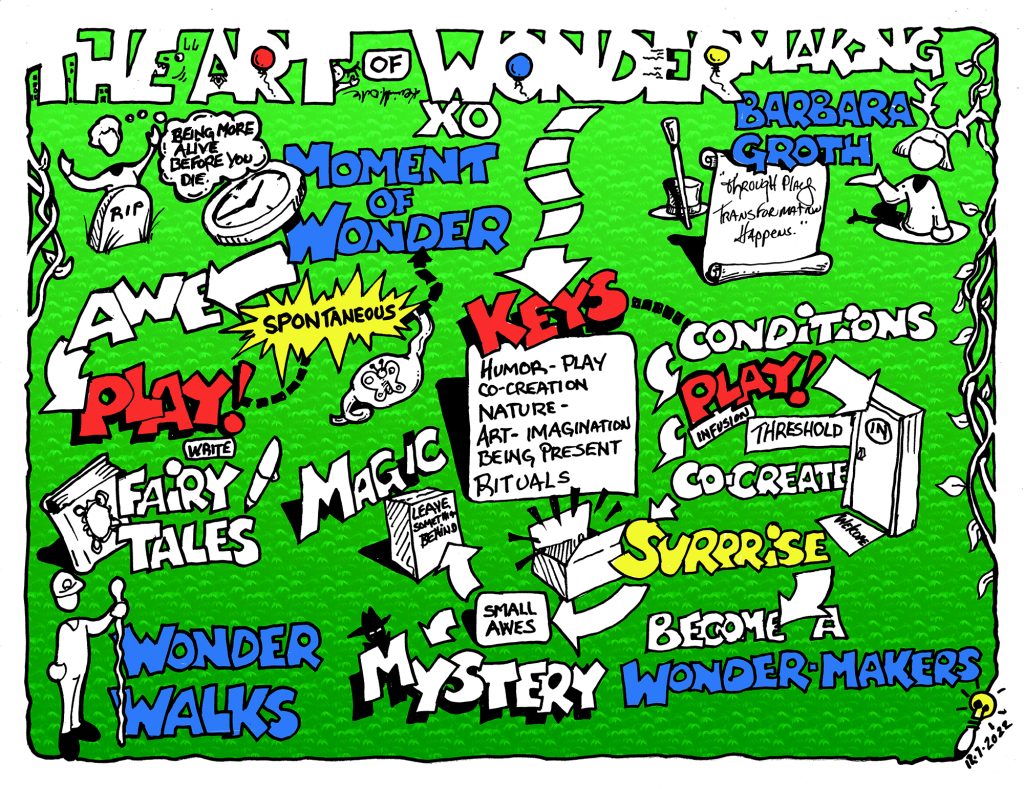
Having hosted real-life campfires under the skies of New Mexico, Newfoundland and beyond in pursuit of the answer, it’s unsurprising that Groth’s WXO Campfire unearthed a treasure trove of tools and insights to infuse wonder into both our everyday lives and the experiences we design.
To discover how to activate the imagination, enliven the senses, and design for true co-creation and alive emergence, read on…
A Shared Experiment In Conjuring Wonder
Story circles are a powerful tool developed by wondermaker Michael Kass that Groth uses to bring people together and explore a shared theme. So to spark our Campfire, we began with a prompt to close our eyes and picture a moment in which we felt a sense of childlike wonder, remembering it in as much sensory detail as possible before sharing in small groups. We then returned to the larger circle to swap our stories.
Despite each person’s experience being subjective and personal, certain themes, or triggers, emerged in common:
- Being in nature – or the contrast between the natural/”real” and artificial
- Being in a mundane place that others didn’t recognise as special, but which triggered something remarkable in the individual
- The spontaneous and unplanned
- Sensory storytelling invoking multiple senses
- The enjoyment of seeing how other people interpreted the experience
Many people also reported a bodily shift when recalling their moment of wonder, from a sense of lightness to butterflies in the stomach or a tingling in the chest.
The Key Ingredients Of Wondermaking
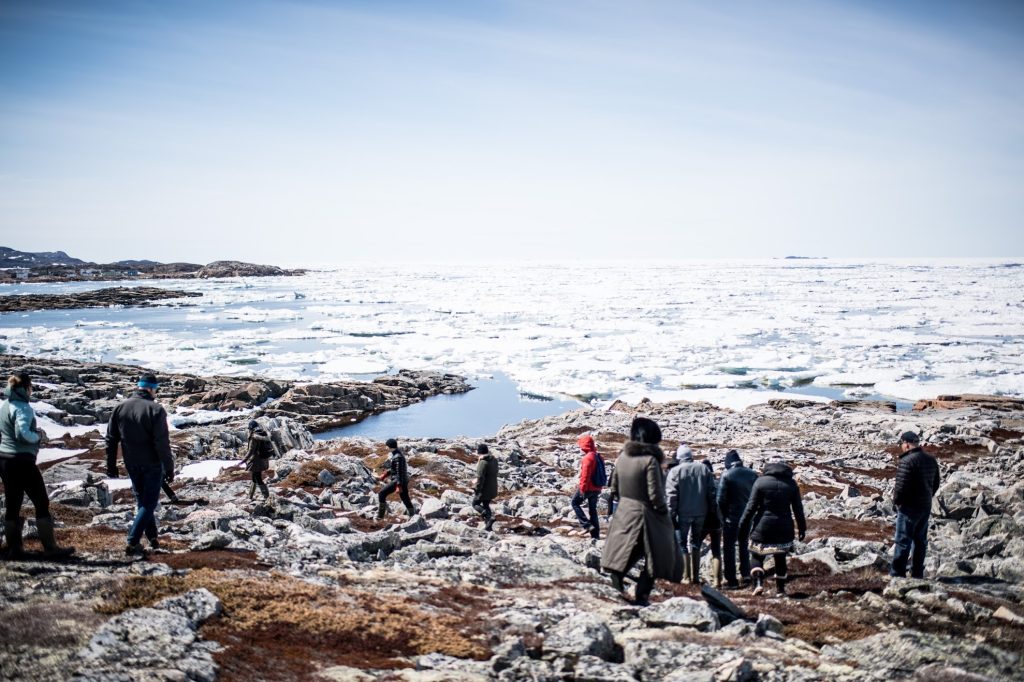
The experiment highlighted that while wonder can be a very subjective experience, there are also certain shared conditions. Groth calls these “the key ingredients of wondermaking”. They include:
- Play
- Belonging
- Community
- Co-creation
- Expression
- Art
- Humour
- Nature
- Connection
- Mystery
- Embodied aliveness
- Awe
- Magic
- Childlike wonder
- Ritual and ceremony
- Imagination
The Nomadic School of Wonder was formed to mix these ingredients together and see what might arise. Groth describes it as a nature school, art school and mystery school, stirred with sacred shenanigans.
Each School takes place in remote, small locations, such as Fogo Island off the Canadian coast, where a unique social enterprise experiment is underway and its presence really matters. It becomes a community-centred design experience.
Participants have fun, dressing up in costumes and creating shared rituals. The classroom is nature, which is not only an inexpensive way of creating the ultimate immersive experience, but also a portal to wonder.
“Our teachers are master artists, wild horses, a ball of clay, the elements, our imaginations.”
Barbara Groth
Each School takes a theme, usually based in or co-created with a local culture, and activates it through the senses. When exploring death and rebirth, for example, participants didn’t just talk about it, but got into pine-box coffins and had palliative care physician Dr. Alex Jadad guide them through the feelings that arose – not for the shock factor, but for a sensory experience of what death might be.
Creating The Conditions For Wonder
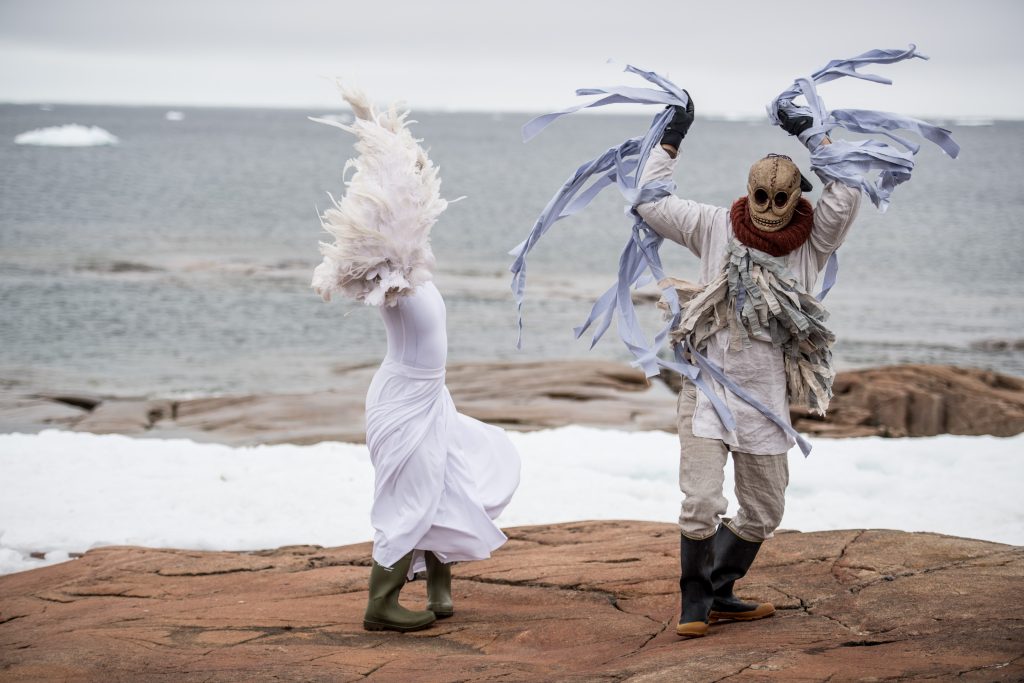
If we want wonder to reveal itself, we can’t just wait for it to show up. Instead, we need to create the conditions for it to manifest. Groth suggests three ways of doing this:
- Invite people to play. Play is an underestimated tool in our experience toolbox to bring people through the doorway to wonder. As the neuroscientist Beau Lotto says:
“Play celebrates uncertainty, it encourages diversity, it’s open to possibility, it’s inherently collaborative & cooperative, and it’s intrinsically motivating.
What is the reward of play? It’s play!
The most successful systems in nature are the ones that play into adulthood.
And play begins with awe & wonder.” - Create a “threshold moment of wonder” where you activate people’s imaginations. The School often activates ancient technologies to achieve this – in a redwood forest, for example, they invited people to touch redwood trees, taste redwood tincture, and participate in a guided visualisation to become one with the grove.
- Enchant the natural world. Activities such as foraging for mushrooms can also help to usher people into another world.
What Does Wonder Do To Our Minds And Bodies?
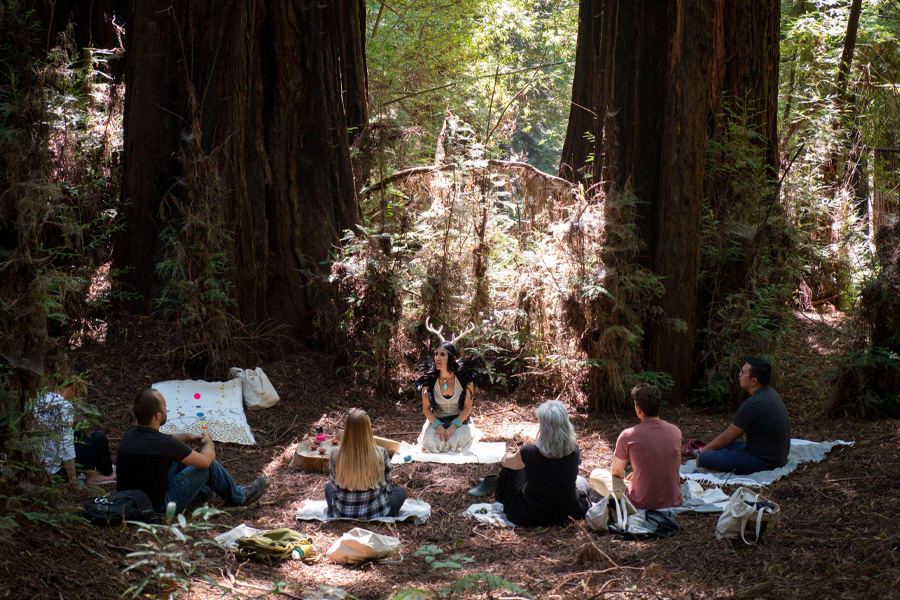
The effect of wonder on how we feel in our minds and bodies is hard to describe, but easy to recognise.
Lotto describes it like this:
“It’s a recognizable, repeatable state in your brain that is shared among all of us. Wonder increases your connectivity to others. You feel more pro-social. Your need for certainty decreases and your appetite for risk increases. It gives us courage.”
Beau Lotto
(For more from Lotto on the experience of awe, check out his TED Talk.)
Wonder expands our sense of what we think is possible. To trigger its effects in our brains, Groth and her wondermakers co-create moments of “embodied aliveness” by getting people’s bodies moving and playing.
They also include moments of surprise and delight, giving artists the freedom to do what they like, but also for guests to become embodied, play, and surprise them just as much as be surprised.
“We’re often afraid of leaving that space for the unknown, but that’s where wonder and awe show up.”
Barbara Groth
We Are All Wondermakers
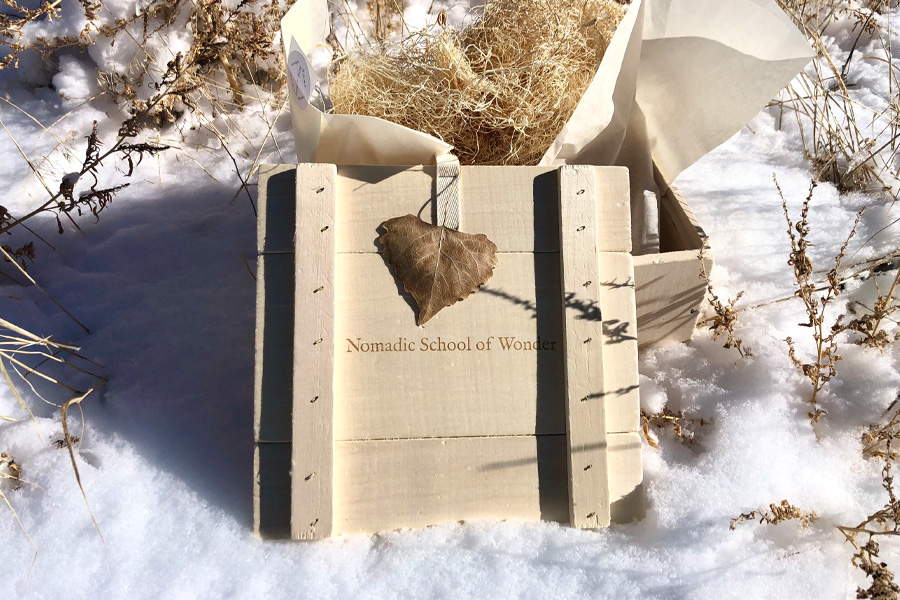
Each School invites participants to become wondermakers. It’s not an activity limited to the chosen few. Together they learn songs, cook together, build things, and prepare for a celebration. As well as bringing people together, from a producer’s standpoint it also means that they don’t have to do all the work!
“Good experience design is like good party hosting – when people make things with you in the kitchen and feel part of it, we all have more fun.”
Barbara Groth
All wondermakers celebrate together with co-created rituals, such as opening and closing ceremonies hosted by artists and sensory ceremonialists Sky Avakian & Hagop Belian.
Leave Space For Serendipity And Small Awe
As well as the big spectacles, it’s important to leave moments for quiet reflection, or “soaking time”, to integrate lessons learned.
“As experience designers, we so want to fill the canvas – but the more we leave space for others, the more magical it is.”
Barbara Groth
Groth calls these “moments of small awe” – something she experienced when silently walking the forests with acoustic ecologist Gordon Hempton, who looks to preserve the world’s quiet places through Quiet Parks International.
Leave Something Wonderful Behind
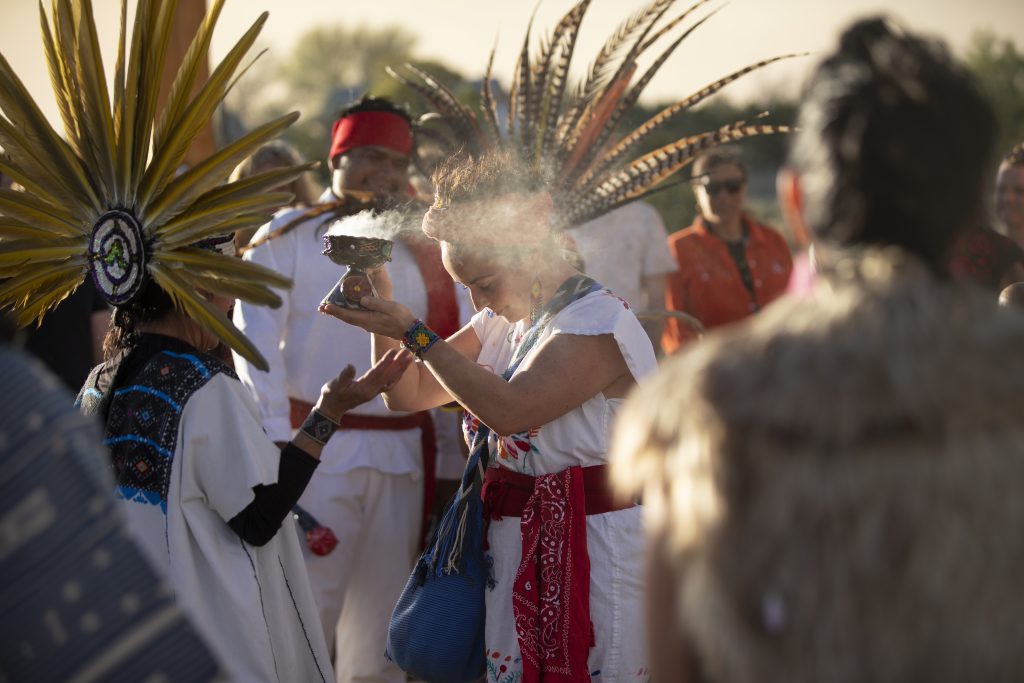
As gratitude for the exchange, the School always leaves something behind for the local community as a host gift, whether that be scholarships, support for local artists, or donations to organizations like the Institute of American Indian Arts.
They also return to a community time and again to build a long-lasting relationship with them, and create art in the location during the School which they return to share with the community.
When participating or borrowing from ceremonies or rituals rooted in a specific place or culture, they also invite people whose land or ancestry it is to perform them. And while art can sometimes blur the boundaries between authenticity and performance, they ensure that artists are there to interpret culture respectfully and co-create with local communities where they can, such as kite-making on Fogo Island.
“We want to make sure as much as possible it’s grounded in something authentic, and the rest is inviting people to be deeply embodied. And we make sure we always honour and express gratitude.”
Barbara Groth
The Power Of Everyday Wonder
Wonder isn’t only reserved for creative retreats in wild locations. We all have access to it in our everyday lives. We can tap into wonder through:
- Paying attention and activating our full sensory awareness
- Going for daily “Wonder Walks” where we tune into nature and the unexpected
- Play
- Making art
- Writing fairy tales. Start with “Once upon a time…” and you’ll be amazed where it takes you and what kind of wisdom emerges.
How Can We Help People Cross The Threshold Into Wonder?
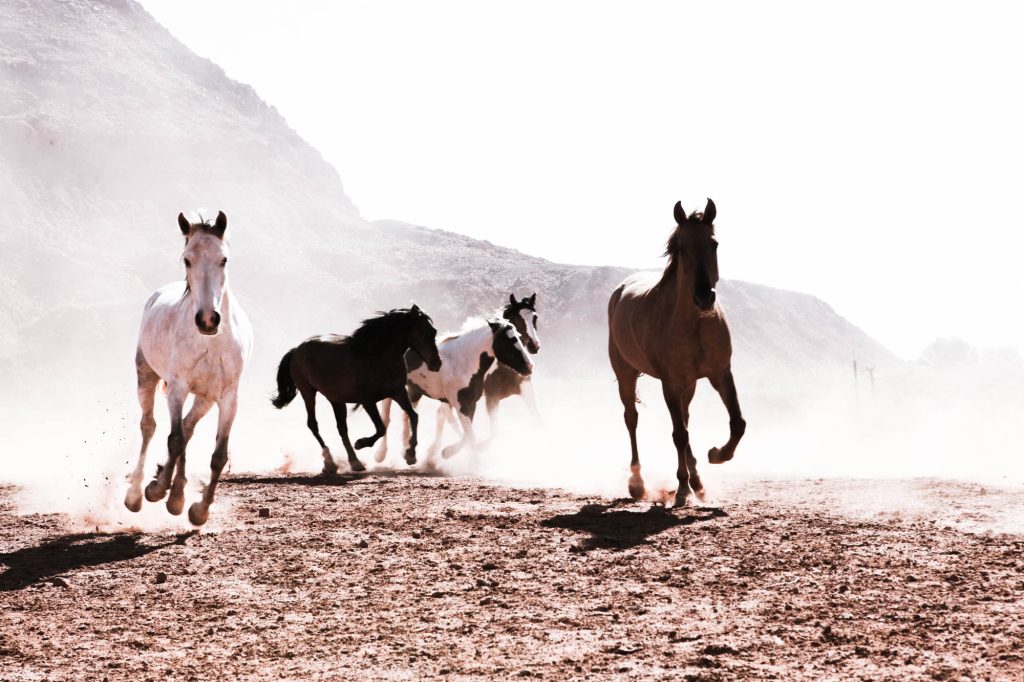
While we might recognise play as a powerful invitation to wonder, not everybody has access to play in their lives. How do we begin to open these people up and make them feel comfortable stepping into the unfamiliar?
Groth suggests tapping into the “sense-memory” of play that we all harbour from our childhoods. By getting people to replicate the same movements of play they did as a child, it helps them to “get into their play bodies” and escape the rigidity of movement and thinking that characterises daily life.
(Could this be another reason why the competitive socializing trend continues to ramp up – it offers us a way of reconnecting with our childhood “play bodies”?)
Having a set of common rules outlining that participants are in a safe and brave space in which to be vulnerable is also important.
“These should be an easy onramp to the experience so you feel comfortable rather than telling you to feel comfortable.”
Barbara Groth
This might be particularly important in a corporate environment, where you might feel unwilling to appear vulnerable next to your co-workers.
“One of the things that enables great transformation is vulnerability, because you feel you have nothing to lose. At the same time, if I’m sent by my company there might be several people there I suspect I can’t be vulnerable with. How do you design for that?”
Melanie Goodwin
Groth believes the answer lies in giving people permission to participate as much or as little as they like. Having differently sized circles for activities can also help people feel more willing to share. As Priya Parker outlines in The Art Of Gathering, everyone has to get in the pool, but where some people want to jump in, others will only dip a toe.
“Being brave gives you permission to be vulnerable.”
Barbara Groth
It can help if the leaders of the organisation jump into the spirit of things first so others follow.
“Bravery has to come from the top. Leaders gotta lead! Corporate culture has to be dictated from the top – that’s why they make such potent collaborators.”
Julian Rad
And ultimately, in order to be truly vulnerable, you have to have something to lose. We can open the door and invite people in, but crossing the threshold is down to them.
Convincing Clients Of The Value Of Wonder
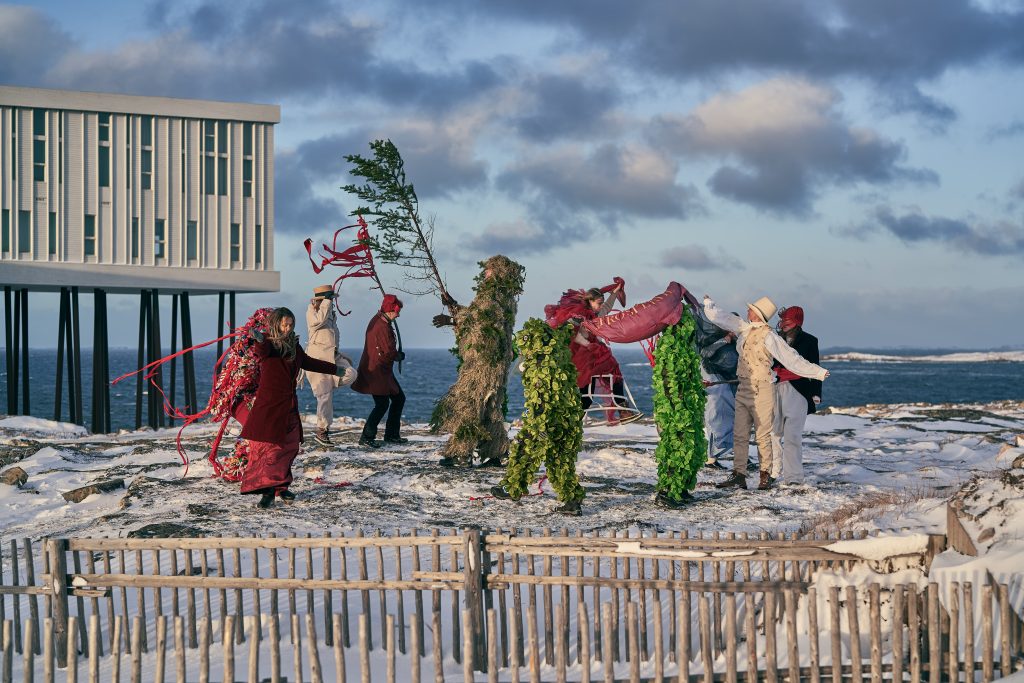
The Nomadic School of Wonder might seem like a blissful realisation of many of the key concepts of good experience design – but as anyone who’s ever designed a corporate experience will recognise, it’s sometimes hard to convince clients of the value of wondermaking.
“Are you upfront with this wonder and magic, or do you have to repackage it as team building and creativity?”
Audette Sophia
Groth acknowledges that the School was lucky to have several years in which to evolve naturally before experimenting in the corporate world, at which point a lot of those interested in working with her were ex-nomads who understood the value of a day of play and wanted to buy into that weirdness.
However, she also found that the pandemic shifted attitudes towards corporate retreats and that people no longer wanted the same team-building events, but were instead willing to lean into more meaningful, experimental kinds of bonding.
“The appetite grew for doing real, deep, playful work. This is us leaning into our weird. This is what sustains us and allows us to support non-profit partners.”
Barbara Groth
(For more on the ways that pandemic has shifted attitudes to work and the opportunities this opens up for experience designers, see Campfires 85 & 86: What The 4-Day Workweek Means For Experience Design and Campfire 69: Reinventing Employee Experience In The Post-Pandemic Workplace.)
Finally, although we might be obsessed with data to prove the ROI (or ROX) of our experiences to clients, Groth is keen to stress that there are other, more important ways to evaluate the success of what we do.
“I’m not a big one to feel like I have to rely on data, but it has increased my wonder about what we do. Sometimes we measure things when appropriate – other times we spend time with horses. I don’t want to overload on metrics. My job in the world is to get us out of our heads and into our bodies.”
Barbara Groth
The WXO Take-Out
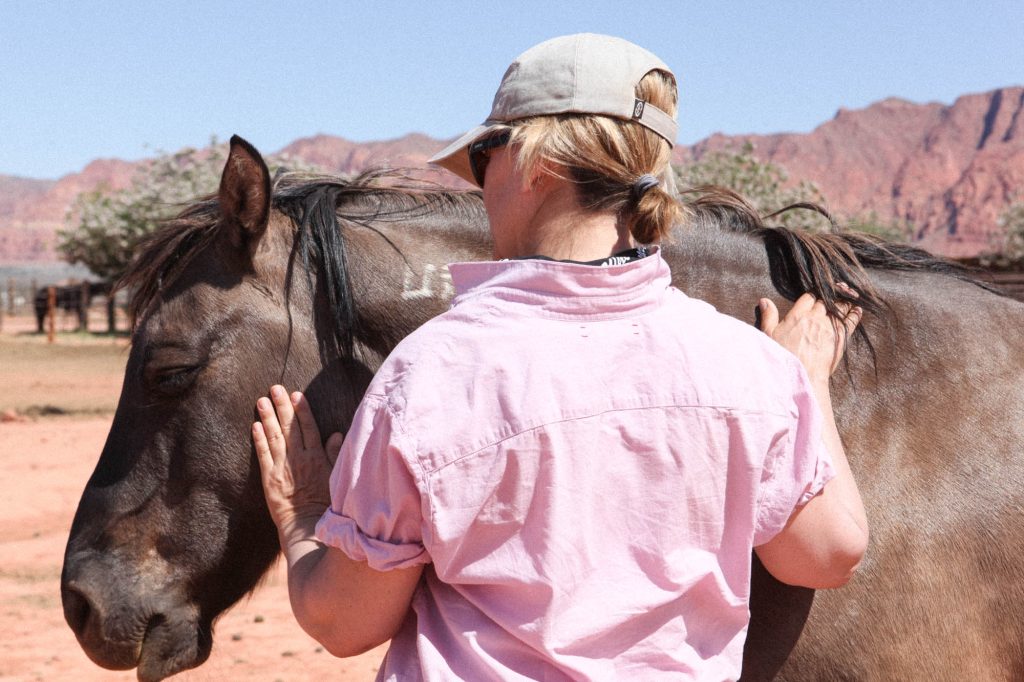
In a world obsessed with technology, data and bombastic visuals, it’s refreshing to realise that each of us has access to wonder all the time, both in our experiences and in our everyday lives.
By simply paying attention to our surroundings, tapping into our senses and sense-memories, and paying gratitude to the people and environments around us that make wonder possible, we can create experiences that are deeper, more meaningful and more transformative.
So next time you’re creating an experience, ask yourself:
- How might you help participants to be vulnerable?
- How might you infuse more moments of wonder into your life and into the experiences you create?
- How might you feel if you had your hand on a wild horse with someone else’s hand on your back?
To see the full line-up for the WXO Campfires Season 6, click here.
To apply to join the WXO and attend future Campfires, click here.

